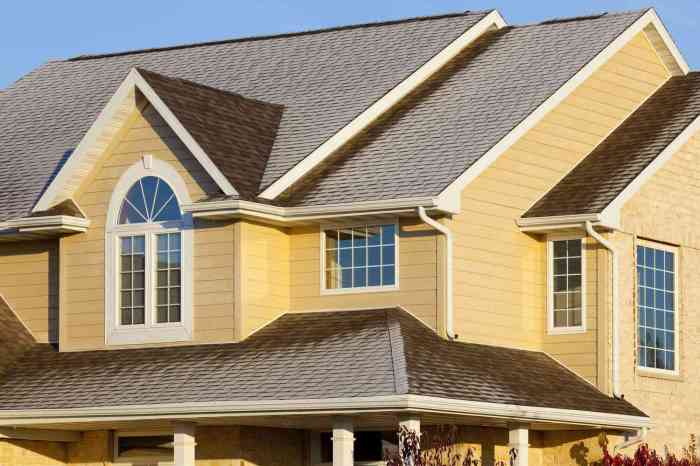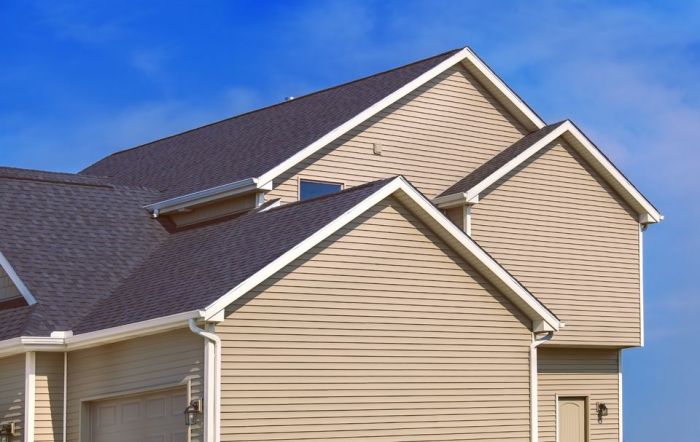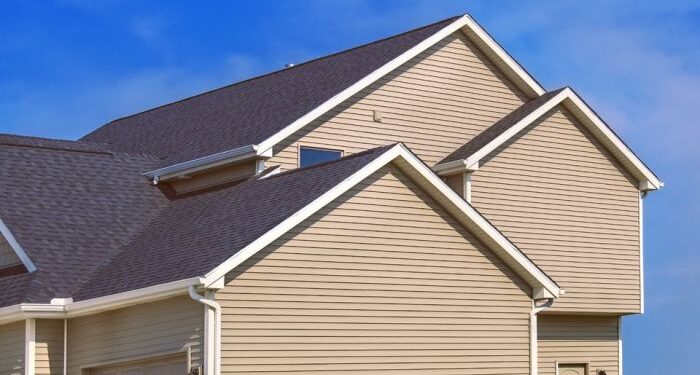As Best Way Siding and Roofing: Affordable or Overpriced? takes center stage, this opening passage beckons readers with a captivating overview of the topic, setting the stage for an informative and engaging discussion ahead.
The following paragraphs will delve into various aspects of siding and roofing pricing, exploring factors, strategies, customer feedback, and industry standards to provide a comprehensive understanding of the topic.
Factors to Consider
When it comes to choosing siding and roofing materials for your home, there are several factors that can influence the overall cost. It's important to consider the type of material, its quality, and the long-term cost-effectiveness before making a decision.
Types of Siding and Roofing Materials
- Vinyl: Vinyl siding is a popular choice due to its affordability and low maintenance.
- Wood: Wood siding offers a natural and traditional look but requires more maintenance and can be pricier.
- Fiber Cement: This durable material is resistant to fire, water, and pests, making it a long-lasting option.
- Metal: Metal roofing is known for its durability and energy efficiency, but can be more expensive upfront.
- Asphalt Shingles: Asphalt shingles are the most common roofing material due to their affordability and ease of installation.
Impact of Material Quality on Pricing
The quality of siding and roofing materials can significantly impact the overall pricing. Higher quality materials may come with a higher initial cost but can save you money in the long run by requiring less maintenance and repairs. Cheaper materials may need to be replaced sooner, leading to higher costs over time.
Cost-Effectiveness of Various Materials
- Vinyl siding is often the most cost-effective option upfront, but may need to be replaced sooner than other materials.
- Wood siding, while more expensive initially, can be cost-effective in the long run with proper maintenance.
- Fiber cement and metal siding are durable and low-maintenance options that can provide long-term cost savings.
- Asphalt shingles are a budget-friendly roofing option, but may not last as long as metal or tile roofing.
Pricing Strategies

When it comes to siding and roofing services, pricing strategies play a crucial role in determining the affordability and quality of the work provided. Let's delve into some key factors that influence pricing in this industry.
Examples of Pricing Models
In the siding and roofing industry, pricing models can vary widely depending on the company and the scope of the project. Some common pricing models include:
- Fixed Pricing: This model involves a set price for specific services regardless of the project size or complexity. Customers know exactly what they will pay upfront.
- Time and Materials: In this model, customers are charged based on the time spent on the project and the materials used. It offers flexibility but can lead to cost overruns if not managed properly.
- Per Square Foot: Pricing is determined by the square footage of the area being worked on. This model is straightforward but may not account for additional complexities in the project.
How Labor Costs Influence Pricing
Labor costs have a significant impact on the pricing of siding and roofing services. Skilled labor is essential for quality work, but it also comes at a higher cost. Factors such as experience, expertise, and location can all influence labor costs.
Companies that invest in well-trained and experienced crews may charge higher prices to cover these expenses.
Relationship Between Pricing and Service Quality
There is a direct correlation between pricing and service quality in the siding and roofing industry. While lower-priced services may seem attractive, they may also indicate lower quality materials or inexperienced labor. On the other hand, higher-priced services often reflect better craftsmanship, superior materials, and attention to detail.
Customers should carefully consider the balance between pricing and service quality to ensure they receive the best value for their investment.
Customer Feedback

When it comes to evaluating the affordability of Best Way Siding and Roofing, customer feedback plays a crucial role. Testimonials from clients who found the service affordable can provide valuable insights into the company's pricing structure. On the other hand, reviews that mention overpriced experiences can raise concerns about the cost-effectiveness of the services provided.
Let's delve deeper into how customer satisfaction relates to pricing perception.
Positive Testimonials: Affordable Service
- Client A mentioned that they were pleasantly surprised by the reasonable pricing offered by Best Way Siding and Roofing. They highlighted the high-quality workmanship and materials used, making it a great value for the money.
- Customer B expressed satisfaction with the transparent pricing provided by the company. They appreciated the detailed breakdown of costs and felt that the final price was fair and affordable.
Negative Reviews: Overpriced Experiences
- Reviewer X complained about the final bill exceeding the initial estimate provided by Best Way Siding and Roofing. They felt that the additional costs were not adequately communicated beforehand, leading to a perception of overpricing.
- Client Y mentioned feeling disappointed with the overall cost of the project compared to other quotes they received. They believed that the service was overpriced based on the results delivered.
Customer Satisfaction and Pricing Perception
Customer satisfaction is closely tied to pricing perception. Positive experiences with affordable pricing can enhance overall satisfaction and lead to repeat business and referrals. Conversely, instances of overpriced services can result in dissatisfaction and negative word-of-mouth, impacting the company's reputation.
Striking the right balance between affordability and quality is essential for maintaining customer satisfaction and a positive pricing perception.
Industry Standards
When it comes to the construction sector, regulations and standards play a crucial role in determining pricing strategies. These guidelines ensure that companies adhere to specific quality levels, safety measures, and ethical practices in their pricing models. Let's delve deeper into how industry standards influence pricing decisions.
Regulations and Standards for Pricing
In the construction industry, pricing is often regulated by local authorities to prevent unfair practices and ensure transparency. Companies must comply with pricing standards to maintain a level playing field and protect consumers from price manipulation. These regulations help create a fair market where customers can trust the pricing offered by various contractors.
- Contractors must provide detailed pricing breakdowns to clients, including material costs, labor fees, and any additional charges.
- Price gouging and unjustified price hikes are strictly monitored and can lead to penalties or legal consequences.
- Transparent pricing practices help in fostering trust between contractors and customers, leading to better business relationships.
Competition and Pricing Strategies
Competition in the construction sector can heavily influence pricing strategies. Companies often adjust their prices to remain competitive in the market and attract more customers. Here's how competition affects pricing decisions:
- Competitors offering lower prices may force companies to lower their rates to stay relevant and attract clients.
- Companies may differentiate themselves by offering premium services at higher prices to target a niche market segment.
- Understanding the pricing strategies of competitors is essential for companies to position themselves effectively in the market.
Warranties and Guarantees Impact
Warranties and guarantees play a significant role in pricing decisions for construction companies. Offering strong warranties can influence pricing structures and affect customer perceptions. Here's how warranties and guarantees impact pricing decisions:
- Companies that provide extended warranties may charge higher prices to cover potential future costs associated with repairs or replacements.
- Customers are often willing to pay more for services that come with comprehensive warranties, as they offer peace of mind and assurance of quality.
- Balancing warranty offerings with competitive pricing is crucial for companies to maintain profitability while meeting customer expectations.
Outcome Summary
In conclusion, the discussion surrounding Best Way Siding and Roofing: Affordable or Overpriced? offers valuable insights into the complexities of pricing in the construction industry. By examining different perspectives and considerations, readers can make informed decisions when it comes to their siding and roofing needs.
User Queries
What are the common types of siding and roofing materials used by Best Way Siding and Roofing?
Answer: Best Way Siding and Roofing offers a range of materials including vinyl, wood, metal, and asphalt shingles for siding and roofing installations.
How does material quality impact pricing at Best Way Siding and Roofing?
Answer: Higher quality materials generally come at a higher price point due to their durability and longevity, affecting the overall cost of the project.
What pricing models are commonly used in the siding and roofing industry by Best Way Siding and Roofing?
Answer: Best Way Siding and Roofing utilizes both per square foot pricing and project-based pricing models to offer flexibility to clients.
How do warranties and guarantees impact pricing decisions at Best Way Siding and Roofing?
Answer: Warranty and guarantee options provided by Best Way Siding and Roofing may influence pricing decisions by adding value and assurance to customers.
















